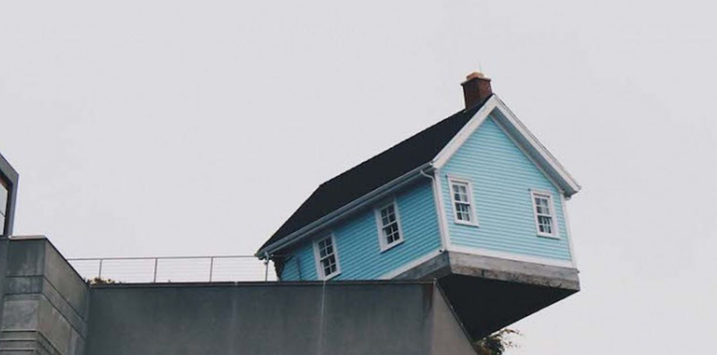
More pain to come as the RBA lifts rates again
Back in May, Montgomery CEO, David Buckland, said he saw New Zealand as Australia’s ‘canary in the coal mine’. As the Kiwis had raised rates earlier and more frequently than our Reserve Bank, their experience would be a good pointer to what we could expect. If he’s right, we now have the answer: big declines in consumer and business confidence, and falling property prices.
Australian house prices are on the slide, and while many commentators believe strong employment, large household savings balances and payments that are ahead of schedule are enough to stave off a more serious property correction in Australia, it appears our Kiwi neighbour’s experience of accelerating house price falls is occurring despite many of the same conditions.
New Zealand first raised interest rates in October 2021 when the RBNZ lifted the overnight cash rate by 25 basis points. Since that first rate increase there have been another five in NZ with the cash rate now sitting at 2.5 per cent.
And coincidentally, house prices peaked in November 2021 and have been sliding ever since. We aren’t going to predict here how far New Zealand (and by extension, Australia’s) house prices could fall but note they would need to decline 30 per cent to return to pre-pandemic levels.
Here at the blog, we have always noted house prices are almost purely a function of access to credit. If the price or availability of credit changes, so do house prices. In New Zealand, bank serviceability tests have been tightening and the amount a bank will lend to a borrower to apply to a property is shrinking. Along with the rising cost of credit, it is unsurprising house prices are falling.
The June quarter data for New Zealand house prices is now in. The Real Estate Institute of New Zealand’s (REINZ) House Price Index fell 5.4 per cent over the June quarter and all major urban geographies fell. New Zealand’s biggest property trading website TradeMe also has an index and it fell nearly two per cent (1.9 per cent) in June. TradeMe noted supply “skyrocketing”.
ANZ bank believes New Zealand house prices will fall 15 per cent. If that prediction proved accurate, aggregate house prices would fall back to February 2021 levels. Since February 2021, NZ$10.2 billion of mortgages have been written with deposits of less than 20 per cent, implying a lot of negative equity for New Zealand home owners.
Drilling down a little deeper, Westpac reported at the end of March it had written NZ$3 billion in loans to borrowers with a deposit of 10–20 per cent and NZ$1.3 billion to borrowers with a deposit of less than 10 per cent. ANZ reported figures of NZ$4.6 billion and NZ$1.8 billion respectively.
And keep in mind ANZ’s 15 per cent price fall prediction is an average. Some properties will fall a lot more (and some less).
Meanwhile, realestate.co.nz reported their total properties for sale in June are up 108 per cent over the same month last year. Of course rising supply means asking prices decline, clearance rates slide and the number of days it takes to sell a property lengthens.
In Australia, auction clearance rates have collapsed. As at August 2, 2022, the national auction clearance rate is just 50 per cent. This is well down on the 75 per cent clearance rate recorded this time last year, according to Domain. The weekend before pegged auction clearance rates at just 48 per cent. Less than half of the houses scheduled for auction are being sold.
One observation worth highlighting is that in New Zealand over half of all new mortgages have debt over six times income. In Australia, it is roughly a quarter of new mortgagees with such very high debt to income levels. Some economists suggest this means Australia won’t see falls as large as our Kiwi friends might experience.
But before believing this is comforting, just remember it is the ‘marginal’ buyer and seller who determine property prices for everyone else. You and I don’t determine house prices. It’s the people this weekend who determine prices for everyone else. You only need a few desperate sellers to push prices down materially. Whether a quarter or half have very high debt levels probably makes little difference.
In New Zealand, consumer confidence has crashed to near record lows, and according to ANZ Economics, business confidence and activity has also tanked. Residential construction intentions have hit fresh record lows and housing consents are dropping. A sharp slowdown in building activity is imminent for New Zealand. This might be good news, if experienced in Australia, for local renovators who have suffered from insane price increases for everything from structural steel to plywood, but it’s not great news for the economy. The construction industry is the third largest employer in Australia.
One possible saving grace for Aussie homeowners is that in New Zealand, their central bank is aiming for a restrictive setting. The RBNZ has said they will continue to raise rates to fight inflation, which in the June quarter achieved a 32-year record. Here in Australia, we have been told ‘neutral’ is the preferred position. Of course, it’s worth remembering nobody, not even the RBA, knows what neutral actually is.
I believe most of NZ mortgages are fixed whereas Aus most variable so cash rate changed transmits to households quicker.
Thanks Phil. I will look in to that.